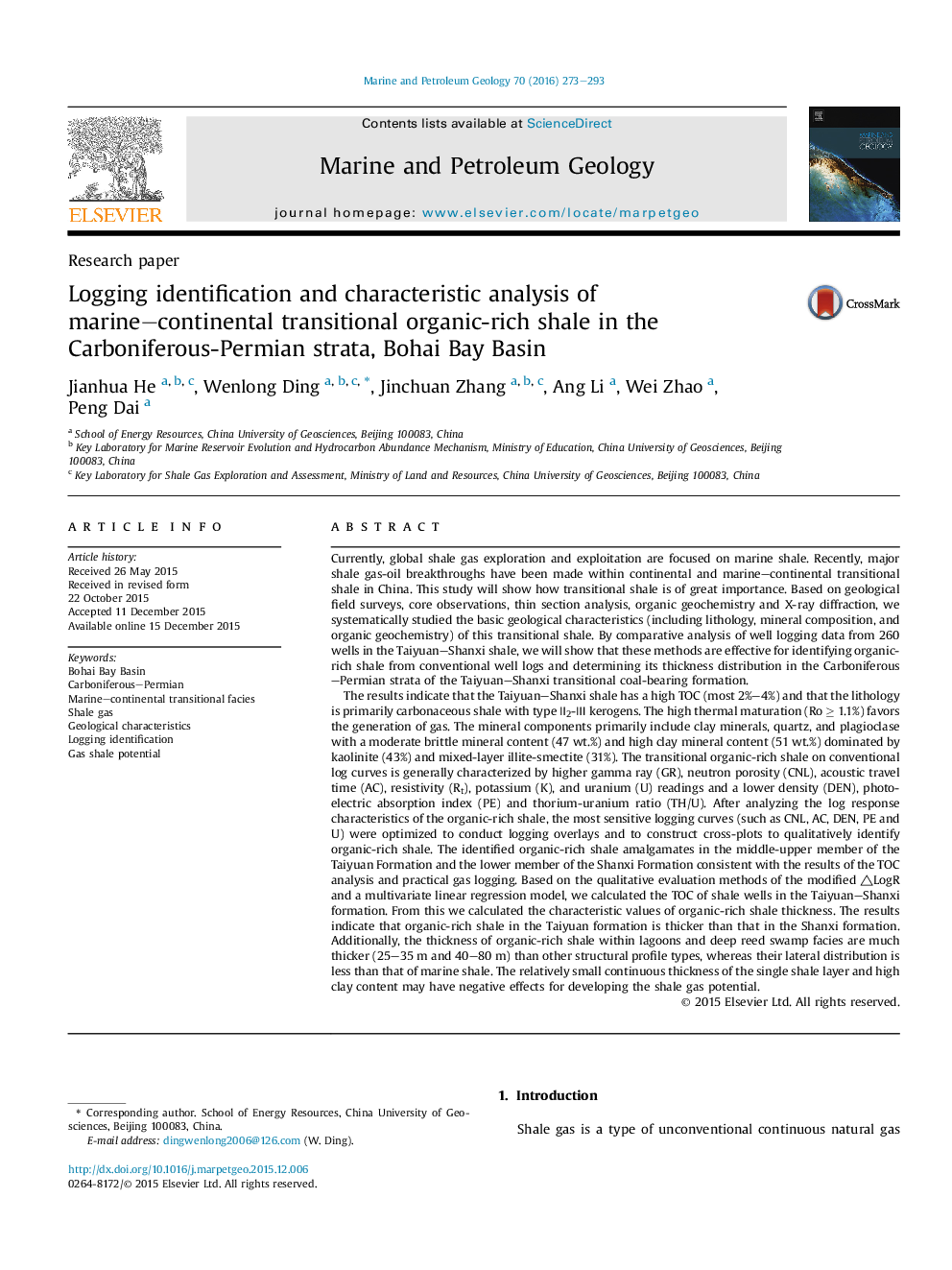| کد مقاله | کد نشریه | سال انتشار | مقاله انگلیسی | نسخه تمام متن |
|---|---|---|---|---|
| 4695457 | 1637157 | 2016 | 21 صفحه PDF | دانلود رایگان |
• The basic geological characteristics of transitional shale in Bohai Bay Basin.
• Log response characteristics of transitional organic-rich shale.
• Logging identification method of transitional organic-rich shale.
• Transitional organic-rich shale profile structure in the vertical.
• Distribution characteristics of transitional organic-rich shale in Bohai Bay Basin.
Currently, global shale gas exploration and exploitation are focused on marine shale. Recently, major shale gas-oil breakthroughs have been made within continental and marine–continental transitional shale in China. This study will show how transitional shale is of great importance. Based on geological field surveys, core observations, thin section analysis, organic geochemistry and X-ray diffraction, we systematically studied the basic geological characteristics (including lithology, mineral composition, and organic geochemistry) of this transitional shale. By comparative analysis of well logging data from 260 wells in the Taiyuan–Shanxi shale, we will show that these methods are effective for identifying organic-rich shale from conventional well logs and determining its thickness distribution in the Carboniferous–Permian strata of the Taiyuan–Shanxi transitional coal-bearing formation.The results indicate that the Taiyuan–Shanxi shale has a high TOC (most 2%–4%) and that the lithology is primarily carbonaceous shale with type Ⅱ2-Ⅲ kerogens. The high thermal maturation (Ro ≥ 1.1%) favors the generation of gas. The mineral components primarily include clay minerals, quartz, and plagioclase with a moderate brittle mineral content (47 wt.%) and high clay mineral content (51 wt.%) dominated by kaolinite (43%) and mixed-layer illite-smectite (31%). The transitional organic-rich shale on conventional log curves is generally characterized by higher gamma ray (GR), neutron porosity (CNL), acoustic travel time (AC), resistivity (Rt), potassium (K), and uranium (U) readings and a lower density (DEN), photoelectric absorption index (PE) and thorium-uranium ratio (TH/U). After analyzing the log response characteristics of the organic-rich shale, the most sensitive logging curves (such as CNL, AC, DEN, PE and U) were optimized to conduct logging overlays and to construct cross-plots to qualitatively identify organic-rich shale. The identified organic-rich shale amalgamates in the middle-upper member of the Taiyuan Formation and the lower member of the Shanxi Formation consistent with the results of the TOC analysis and practical gas logging. Based on the qualitative evaluation methods of the modified △LogR and a multivariate linear regression model, we calculated the TOC of shale wells in the Taiyuan–Shanxi formation. From this we calculated the characteristic values of organic-rich shale thickness. The results indicate that organic-rich shale in the Taiyuan formation is thicker than that in the Shanxi formation. Additionally, the thickness of organic-rich shale within lagoons and deep reed swamp facies are much thicker (25–35 m and 40–80 m) than other structural profile types, whereas their lateral distribution is less than that of marine shale. The relatively small continuous thickness of the single shale layer and high clay content may have negative effects for developing the shale gas potential.
Journal: Marine and Petroleum Geology - Volume 70, February 2016, Pages 273–293
